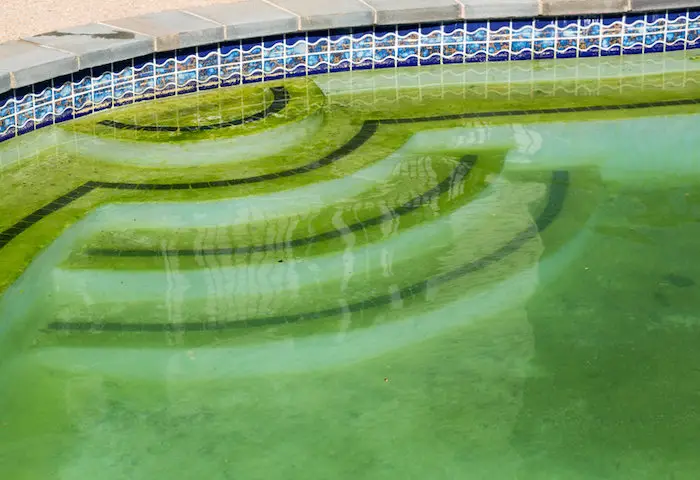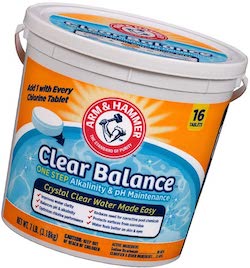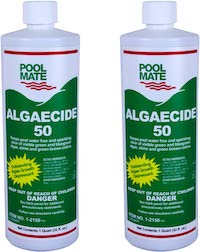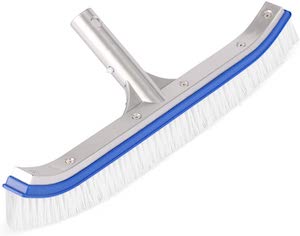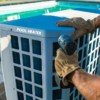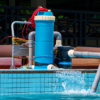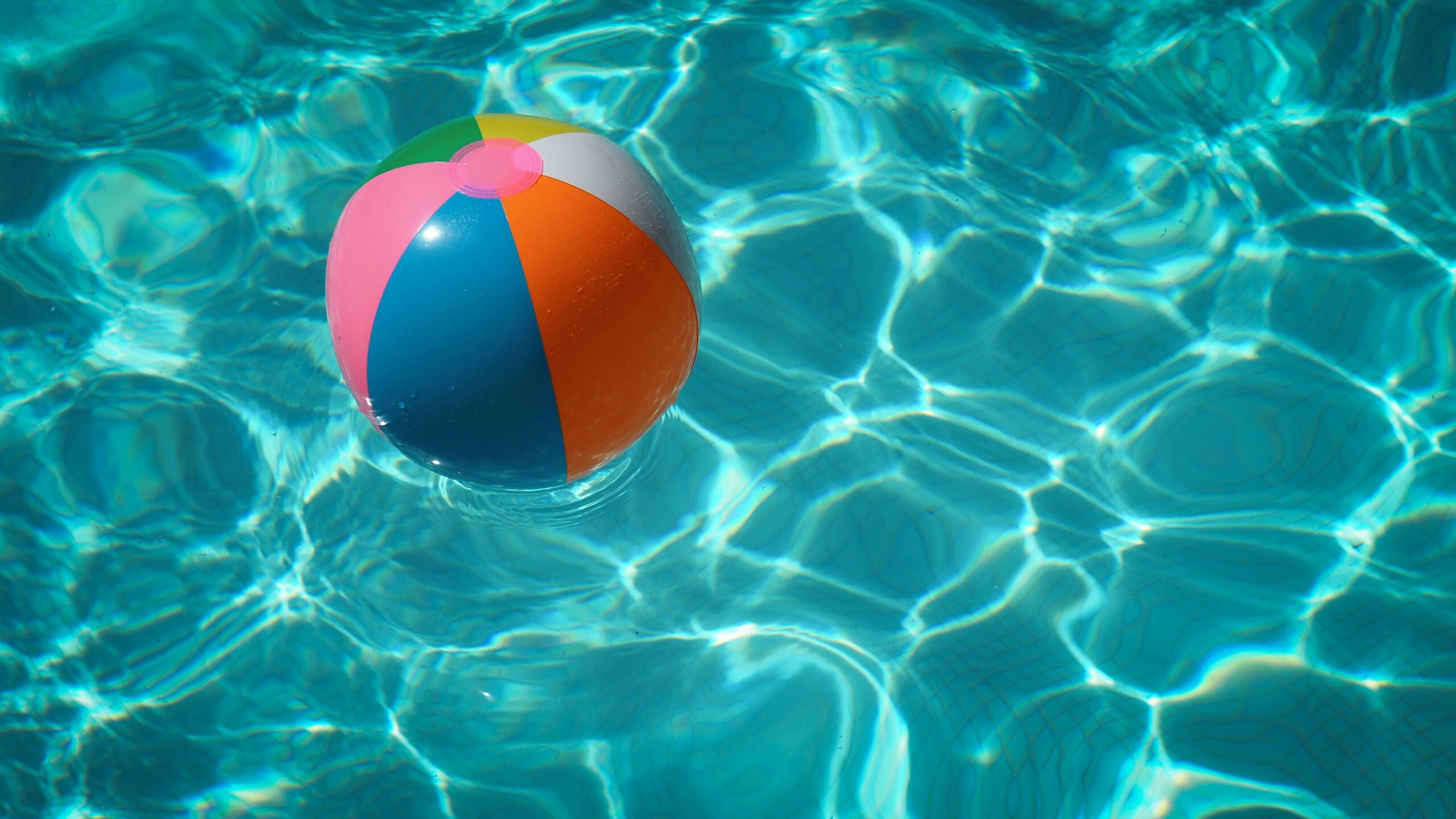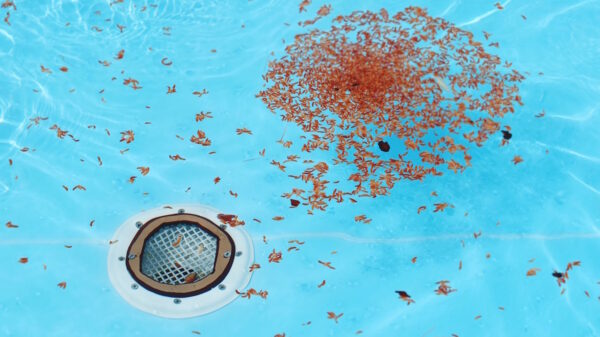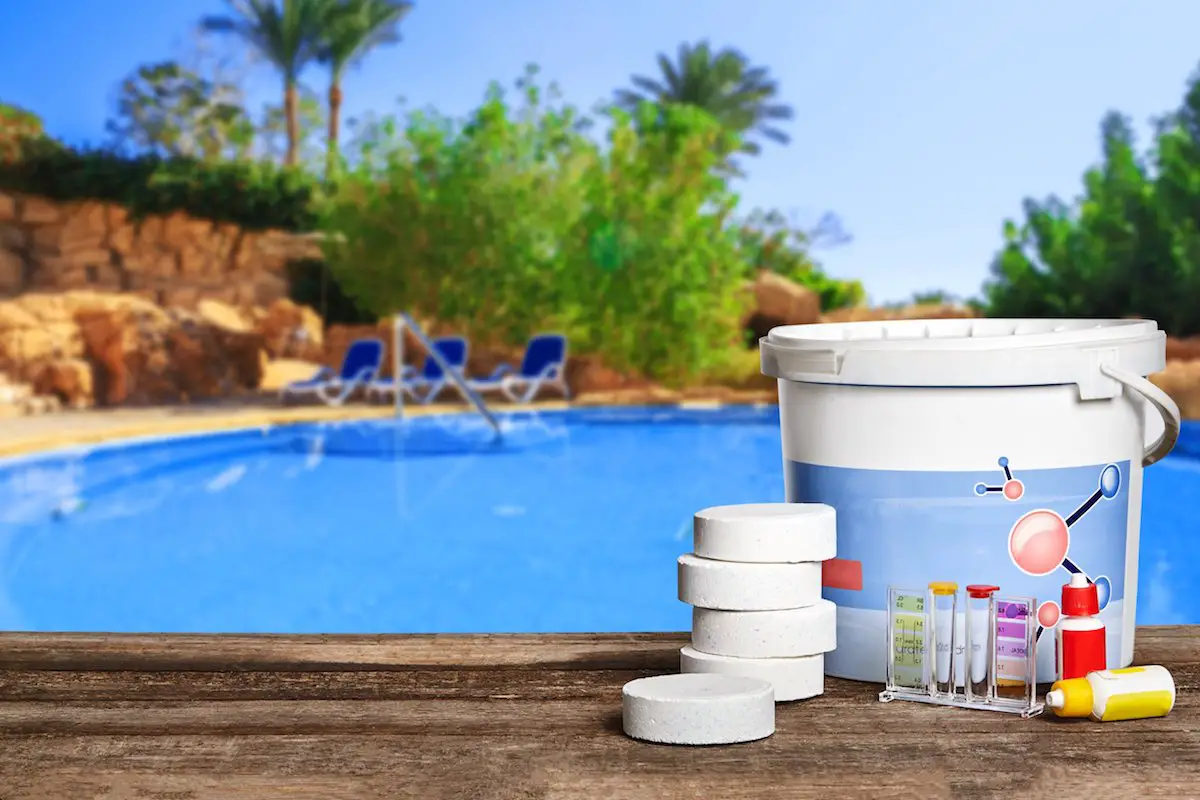A green swimming pool can be a nightmare for pool owners. I’ve had my pool turn green multiple times over the years. One of the main reasons that swimming pools turn green is that the water has too much algae in it. Another common issue is that there is something wrong with the filter system. Here at Pool Owner Academy we’re going to help you fix your green pool problem. We’ve come up with an 11 step process on how to clear up your green pool!
Why Does Algae Invade Pools?
Water sanitizer and chlorine levels often fall below optimal levels. Sanitizer makes your pool inhospitable to algae and kills it. If the levels are not enough, you may not have added enough bromine or chlorine to your green pool. Mother Nature rarely keeps to our schedules, and our testing regimen is another one she’ll ignore. Make sure that you are following a good schedule for maintaining your water levels, and use enough sanitizer so that it can kill any bacteria in the water.
8 Steps to Fix a Green Pool
Green pool water is not healthy or safe to swim in. Cleaning up debris and keeping water clear is essential part of being a pool owner. Here are 8 steps to get your pool back to normal.
- Remove All Plant Material from the Green Pool
- Check Your Pump, Filter and Power Source
- Check Your Pool Water’s pH Level and Balance
- Add Algaecide to Your Green Pool
- Check Chlorine Levels and Adjust Accordingly
- Scrub the Algae off of Your Pool
- Vacuum the Pool and Backwash
- Give it Some Time
Step 1: Remove All Plant Material from the Green Pool
One of the other reasons why swimming pools turn green is because they have too much plant material (leaves) in them. Remove all plant material from the green pool and clean all of your filter equipment. If you have a spa, check to see if there is an issue with it as well. Spa chemicals can be different than that for pools so make sure not to mix them together!
Step 2: Check Your Pump, Filter and Power Source
Check to see if there is a problem in the pump, filter or power source that could be causing algae to grow and turn your pool green. If there is a problem, fix it as soon as possible. Check and clean filters on pump system daily or every other day if they are not self-cleaning.
Disinfect with chlorine or another sanitizer. Make sure that the pump is running clean and free of debris to help filter out algae as well!
Sand filters require a longer backwash time than DE filters to reverse the flow. Above ground pools can be difficult when trying to get rid of algae, only because there is no “Main drain” or a drain at the bottom. Balancing the chemistry will be the first step to clear the water, but filtration is the most important.
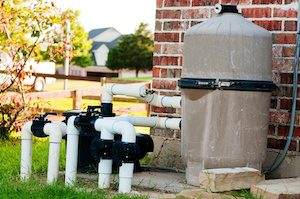
Step 3: Check Your Pool Water’s pH Level and Balance
The next thing to do is to check your pool water’s pH level and balance. Check your water pH levels to make sure that they are not too low or high, as this can cause issues with how clean your swimming pool is. If it’s too acidic then try adding sodium bicarbonate (baking soda) while if its alkaline add a citric acid product such as food grade lemon juice. Keep checking these until it reaches a comfortable level; do not over do either of them though because doing so could result in other problems down the line!
Step 4: Add Algaecide to Your Green Pool
Add algaecide to pool water once per week for at least two weeks in row depending how green your pool is.
What is algaecide?
Algaecide is a chemical that kills algae in swimming pools. It’s often used with chlorine to kill bacteria and make the pool water safe for swimmers. Rinse off algaecide residue using an approved clarifier.
Step 5: Check Chlorine Levels and Adjust Accordingly
Keep chlorine levels between 50 – 100ppm by adding sodium dichloro phenate (dichlor) tablets into the skimmer basket before shutting off filter pumps each night. The following morning open up drains on all return lines so that fresh water can replace stored water with chlorinated water again and then turn filter pumps back on.
If there seems to be a bigger issue, then you need to increase chlorine levels by adding either liquid bleach or calcium hypochlorite tablets for pools over 25000 gallons capacity. You can also buy shock treatments designed specifically for green swimming pools. You can shock the pool to help with pools that are severely out of balance.
**Be sure not mix anything together before adding it into your pool!
Use a UV Light to Shock Your Water
Shock your water with UV light. This should kill any algae in green pools if it’s not too advanced yet. You can also use copper sulfate to accomplish the same thing; however, be sure to make adjustments as necessary once your swimming pool clears up because copper is toxic when there are high amounts present over time – usually more than two weeks worth of applications.
Step 6: Scrub the Algae off of Your Pool
Brush the pool to clean the walls and floor. It’s more effective to scrub algae off using a strong brush like those used on outdoor furniture or vinyl siding. The stronger they are, the better job they will do at getting rid of any green substances in your wall tiles. Be careful while doing this because when your pool deck gets algae on it, it becomes very slimy and hard to work with – don’t get stuck on some of these slippery surfaces! Rinse down anything you’ve cleaned once done so that no more debris falls into the pool.
Step 7: Vacuum the Pool and Backwash
Use a vacuum to clean the surface of your pool and backwash sand filters. Vacuum as many times needed in order to have clear water again. If you are using a cleaner with rotating brushes, use this frequently then rinse it down after each time used so that no debris is left inside.
Backwashing removes any dirt or clogs inside the filter system that could be causing algae growth. Follow manufacturer’s instructions for how often this should happen in relation to when you last cleaned filter elements (typically every week). Be careful not to over-backwash if there is no problem because doing so can cause other issues such as too much chlorine or chemical imbalance!
Step 8: Give it Some Time
Finally, give your swimming pool some time before jumping back into use – ideally at least a week. It takes time for all of these changes to take effect and you want your pool to be as clean as possible before jumping back in!
How long does it take for a green pool to clear up?
Typically, it will take about two weeks for a green pool to clear up. However, the time can vary depending on what caused the problem in the first place; if there was an algae bloom then it could take longer than just a few days. In general though, don’t worry too much as this is not something that isn’t fixable! The steps outlined above should help you get your swimming pool back into good shape and enjoyably use again soon enough.
Will chlorine clear up a green pool?
Yes, full chlorine treatment can get rid of green pools. You should add a good amount of liquid bleach or calcium hypochlorite tablets to the pool water for large pools and shock treatments designed specifically for green swimming pools at most big box stores.
For smaller sized pools you might want to use an algaecide as well in order to really clear up any algae that’s already present in your green pool. Be sure not mix anything together before adding it into your green pool! Once done with this process come back and check pH levels again, making adjustments if needed until they are comfortable once more . Depending on what caused the issue, some issues could take longer than others but do not worry too much as fixing this is easy
Will baking soda clear a green pool?
Baking soda can help adjust pH levels but will not do much for green pools. You might want to try adding sodium bicarbonate instead of the baking soda if you are looking to fix your pool’s pH levels.
Does a green swimming pool have health risks?
Green pools could potentially cause certain health problems, such as eye irritations or respiratory illnesses. The best thing you can do is stay out of the green pool water until they cleared up! If it turns out that there were any algae blooms then this could be a sign that your water chemistry isn’t balanced properly and should be corrected by an expert ASAP.
Can too much chlorine turn pool water green?
Some people have reported that their pool water has turned green after adding too much chlorine. This is usually due to the pH or alkalinity levels being out of balance which causes algae blooms. If you add too much in order to get rid of this then it can cause other issues such as a higher count on chlorine (chloramines).
The best thing you can do if your pool turns green from using too much chlorine is backwash and vacuum before checking levels again so that everything returns to normal! You should also keep an eye on how often you’re testing for these chemical balances, especially now with how easy they are to monitor.
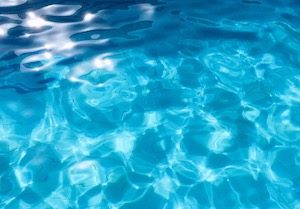
How do I make my green pool water crystal clear?
Making your green pool water crystal clear is easier than you might think! Clean the surfaces of your swimminbg pool with bleach or chlorine tablets that are designed for this purpose. Check pH levels in order to test how acidic or alkaline they are – if too high then add citric acid, if too low then use baking soda. Add more as needed until reaching desired level but don’t overdo either one because doing so can result in other problems down the line! On thing you’ll want to do for a green pool problem is check your water’s pH level. Many times, high levels of acidity will trigger algae growth in pools because it lowers their natural defenses against bacterial invasion. Test your pool water if necessary to make sure there are no issues with how acidic the water can be. Water should be cleaned and filtered every 2 days until it runs clear.
Some times the solution takes a little time but if the problem still persists then contact a local expert who specializes in dealing with algae problems.

